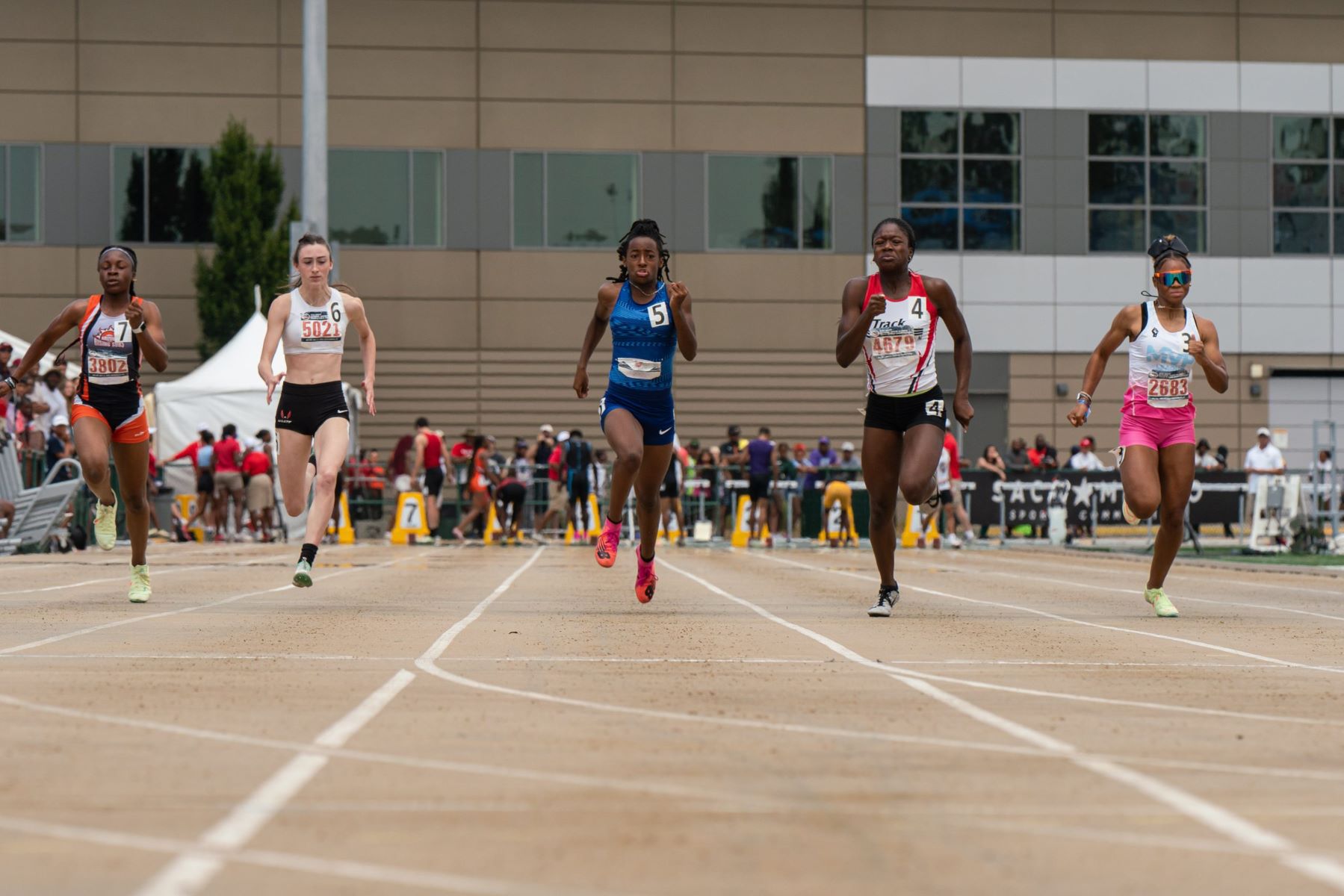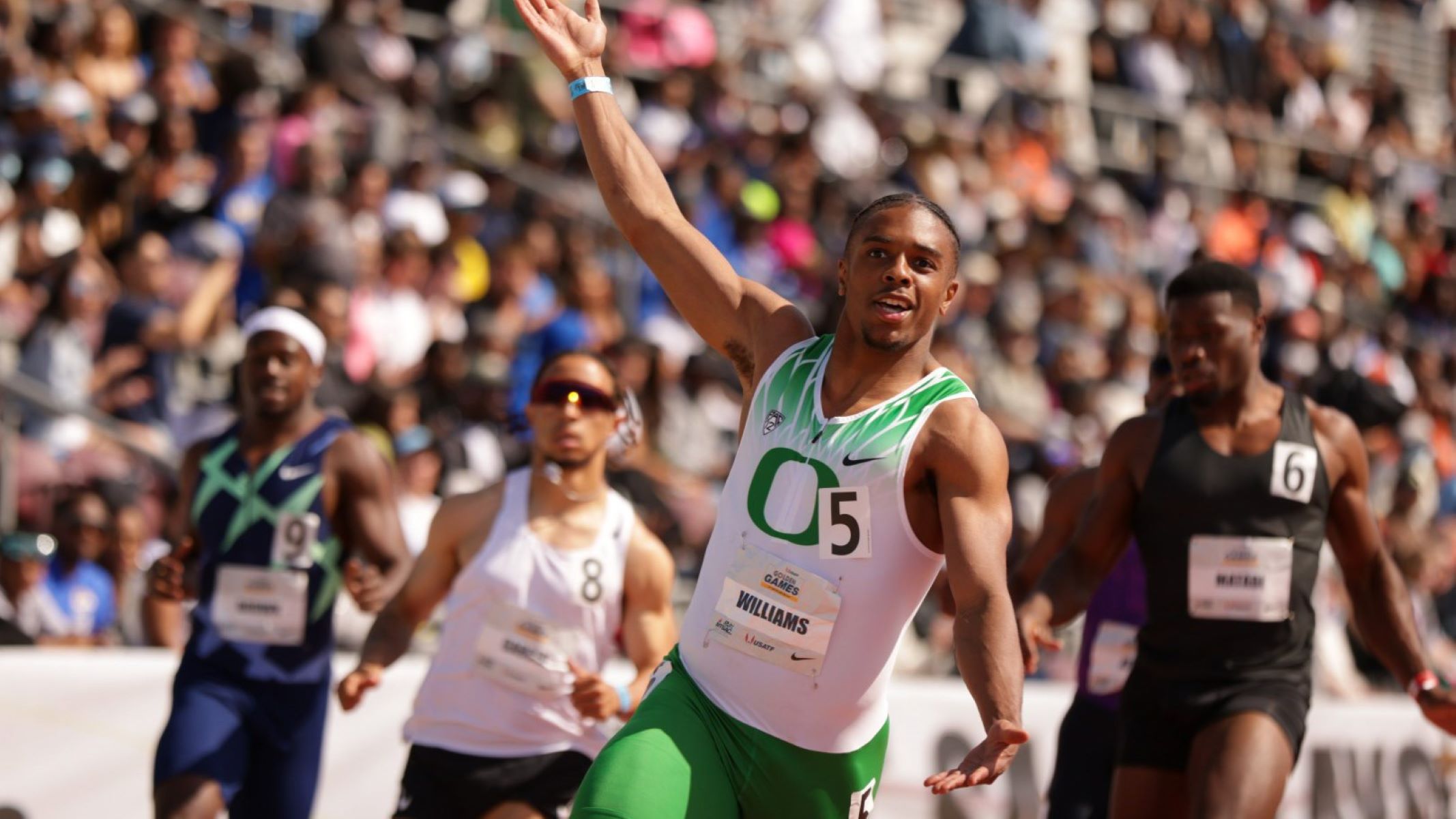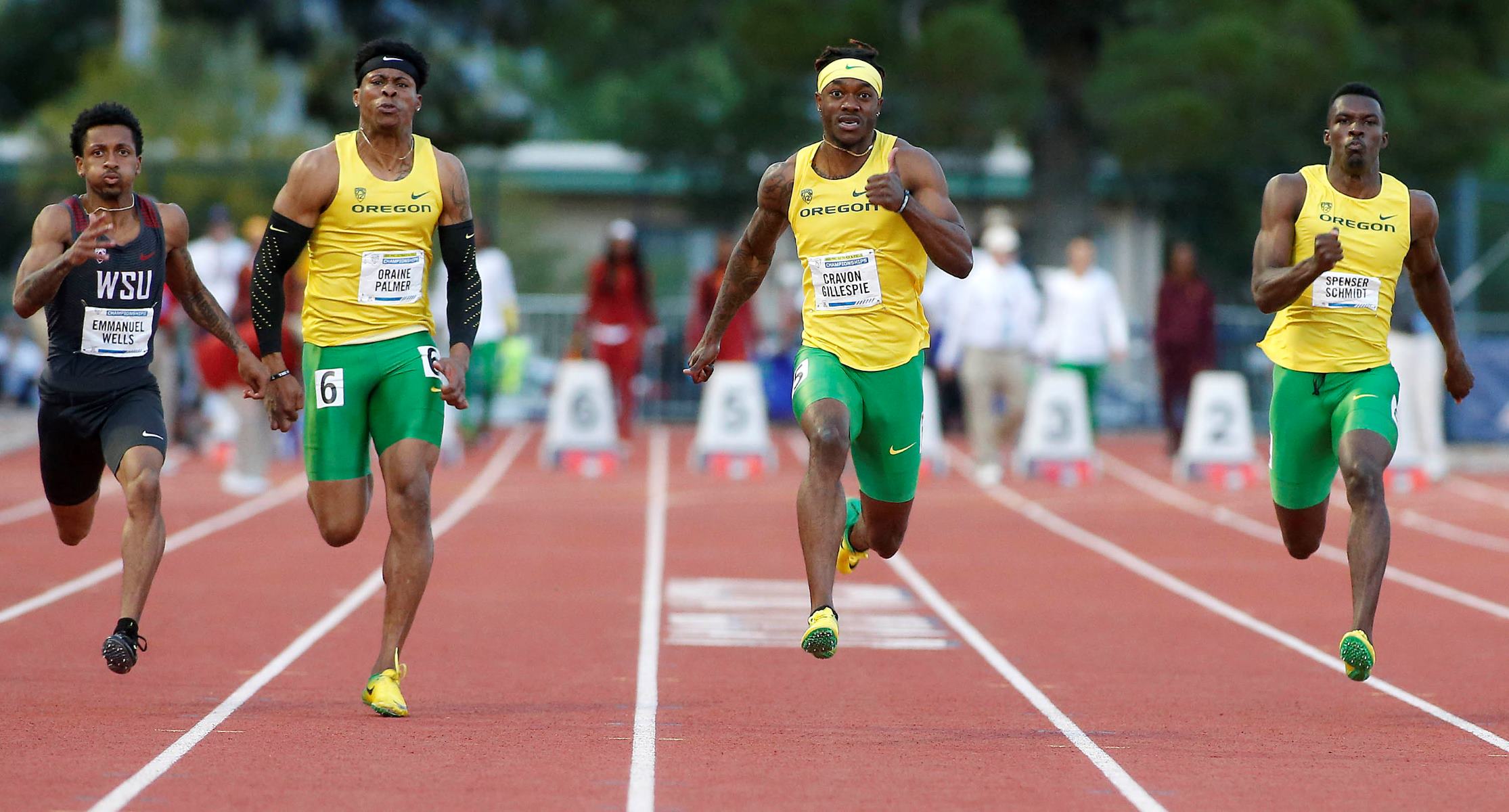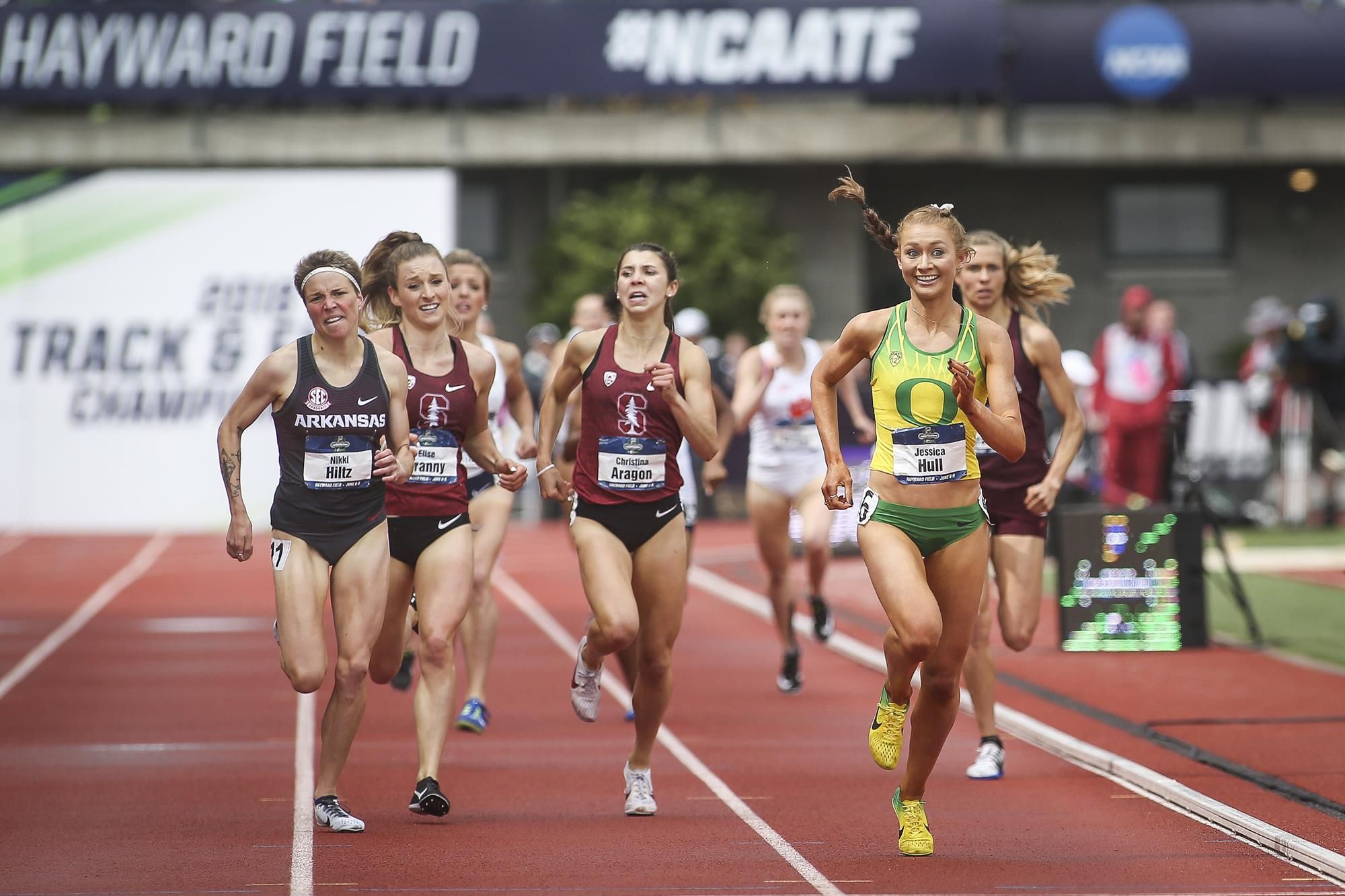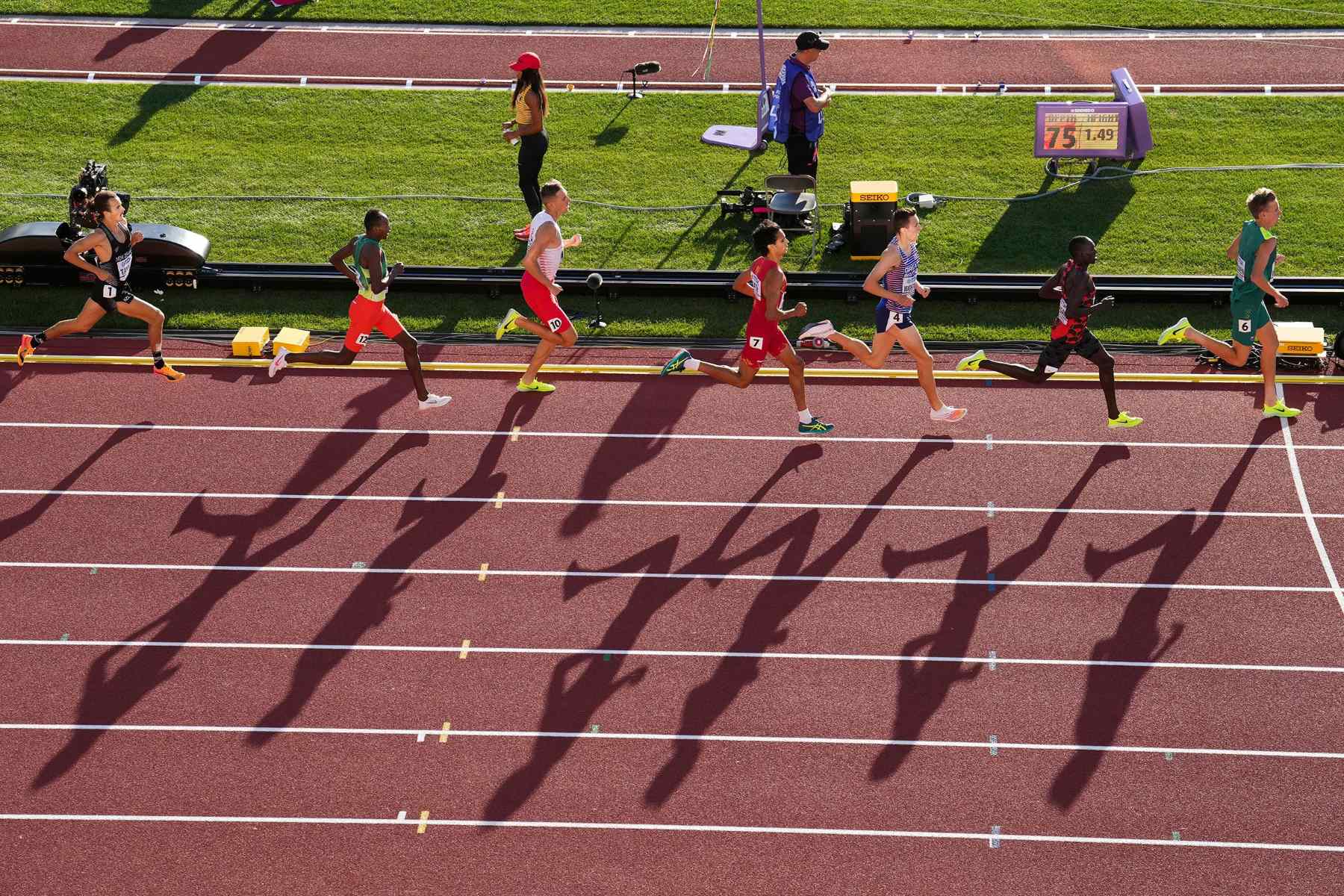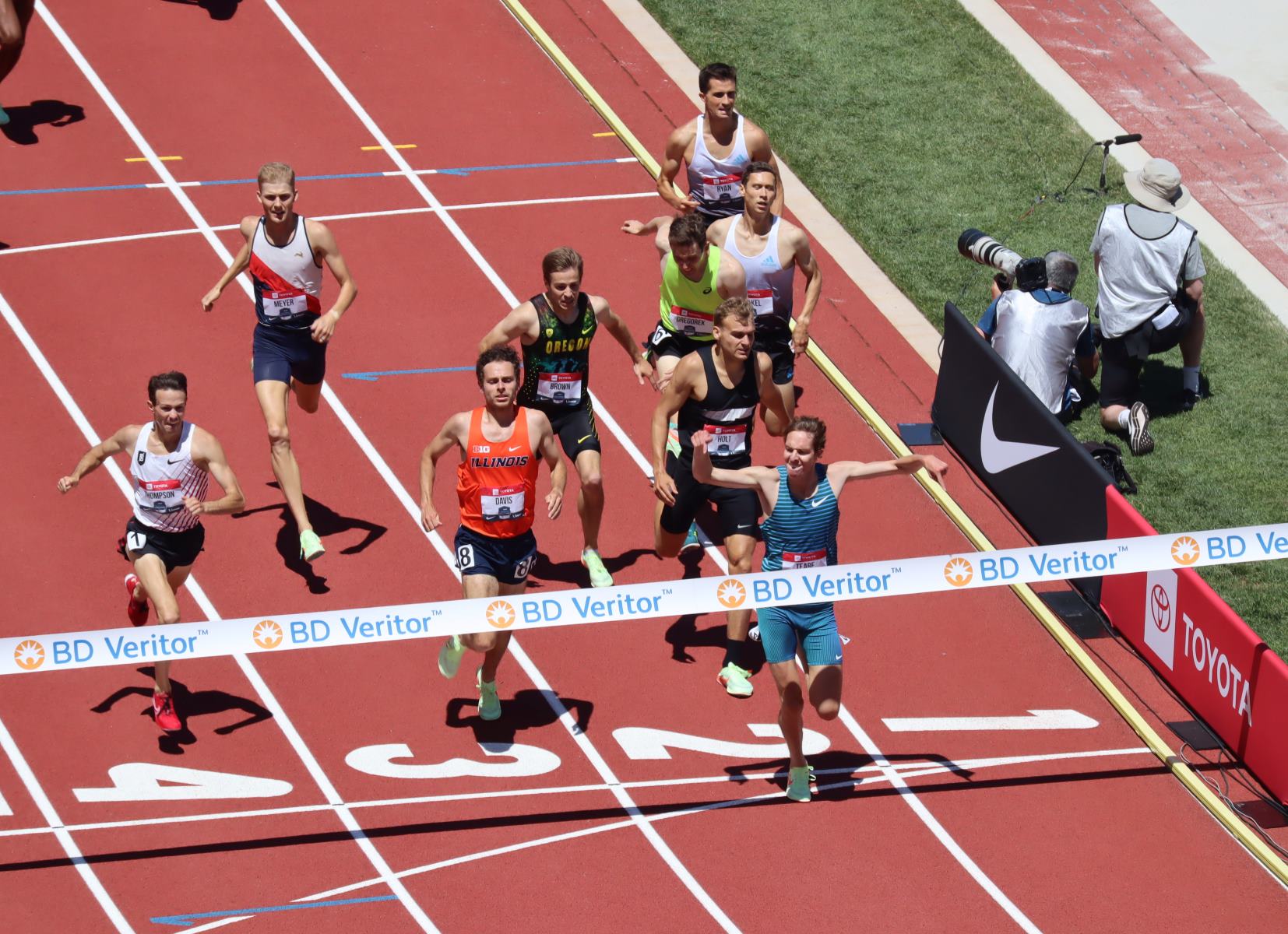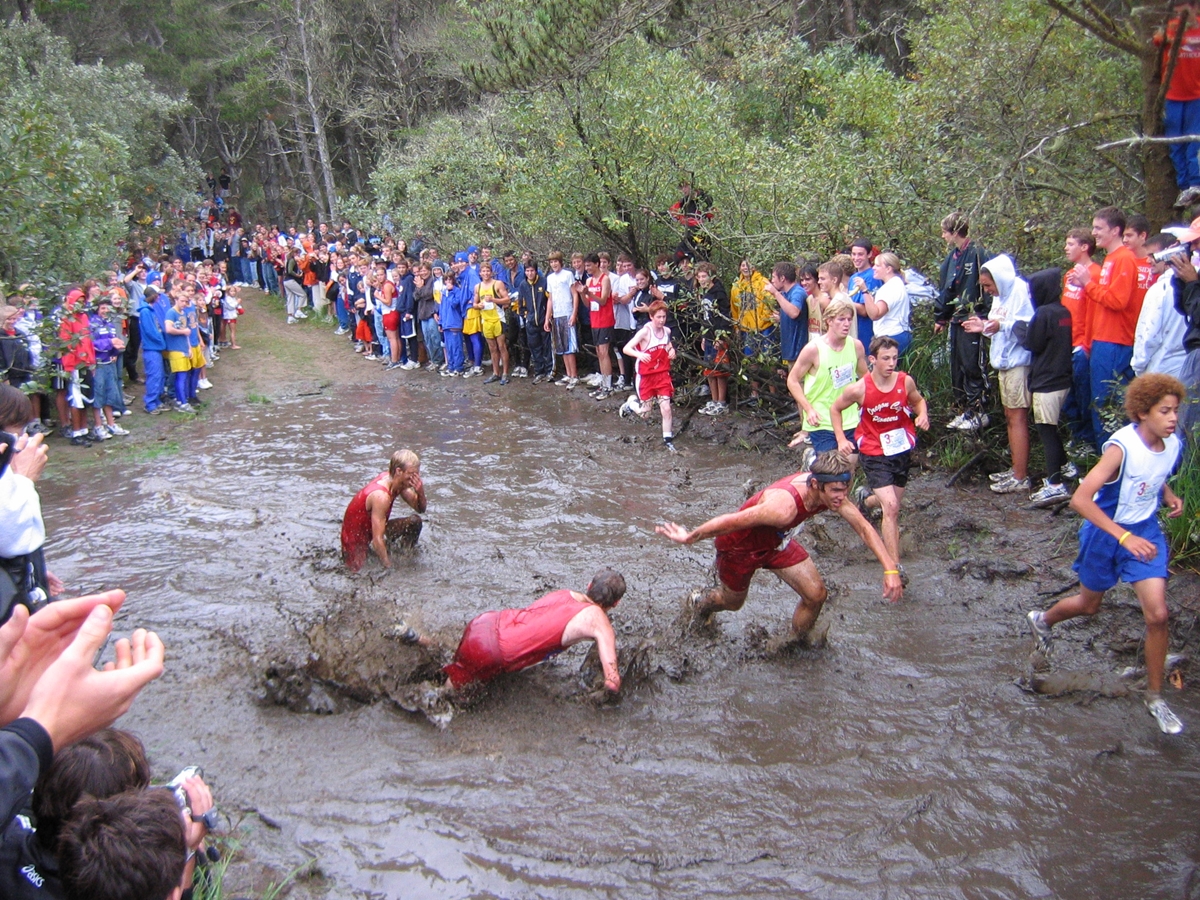Home>Misc>Featured>When Is The World Championship In Track And Field
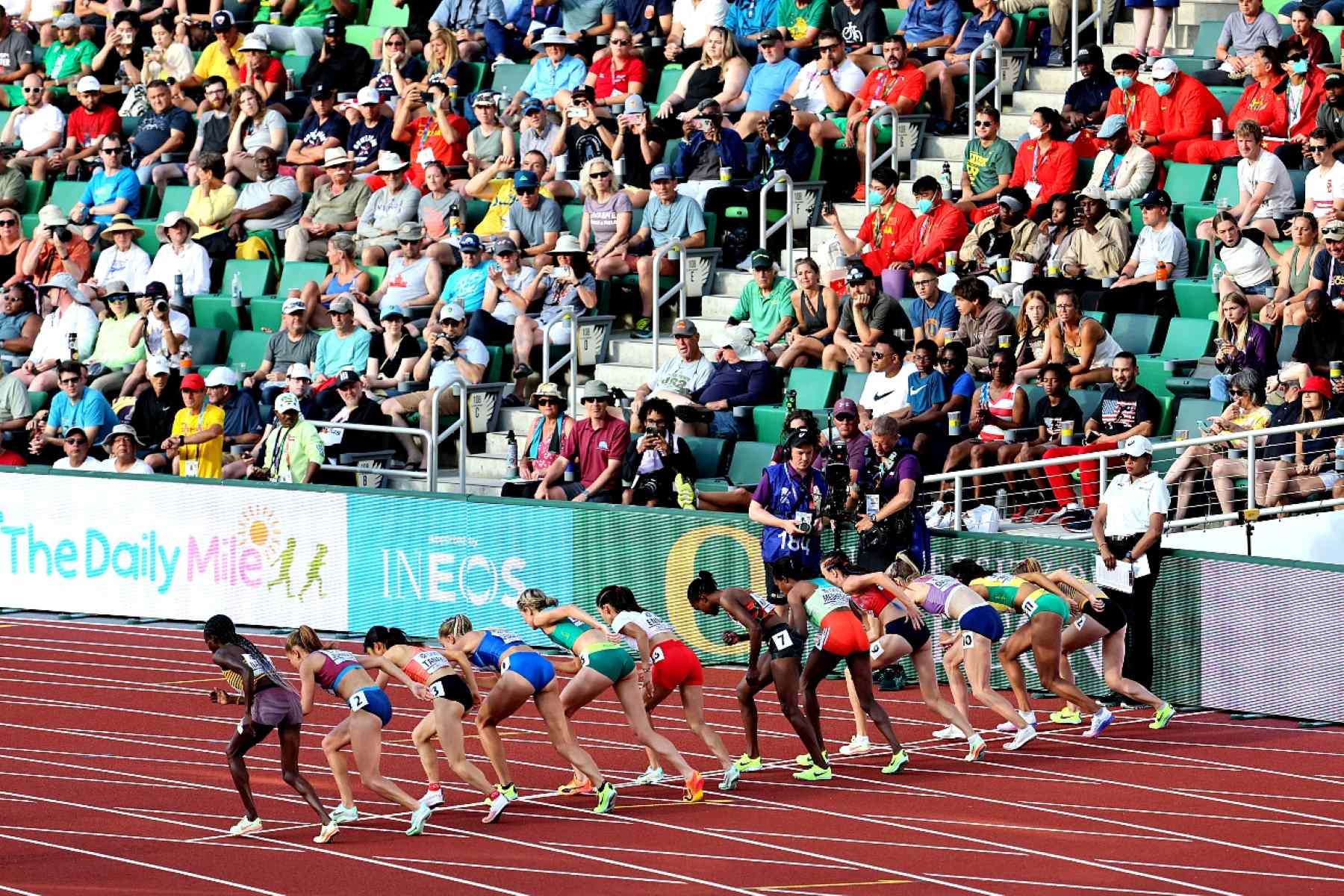

Featured
When Is The World Championship In Track And Field
Modified: January 2, 2024
Get all the details about the featured World Championship in Track and Field. Find out when the event will take place and be ready to witness the greatest athletes in action.
Introduction
Welcome to the thrilling world of track and field, where speed, strength, and skill combine to produce awe-inspiring performances. At the pinnacle of this sport stands the World Championship in Track and Field, a prestigious event that showcases the best athletes from around the globe. With its rich history, intense competition, and remarkable achievements, the World Championship has become a celebrated occasion in the sporting calendar.
First held in 1983, the World Championship in Track and Field has established itself as the ultimate battleground for athletes to test their mettle. Every two years, competitors from different nations gather to compete in a wide array of events, including sprints, jumps, throws, and distance races. With a unique blend of grace, power, and sheer determination, these athletes push the boundaries of human capability, inspiring spectators and fellow athletes alike.
This global event not only serves as a stage for individuals to showcase their talents, but also as a platform to foster unity and camaraderie among nations. Through friendly rivalry and shared passion for the sport, athletes from diverse backgrounds come together, transcending barriers and creating lifelong memories. The World Championship serves as a testament to the power of sports to unite people and celebrate the pursuit of excellence.
The immense popularity and significance of the World Championship can be attributed to several factors. Firstly, it provides a stage for emerging talents to make a name for themselves, as well as for established stars to solidify their position at the top. The competition is fierce, and the stakes are high, making every race, jump, and throw a captivating spectacle for fans around the world.
Furthermore, the World Championship holds immense importance in the context of international athletics. It serves as a qualifying event for the Olympic Games, with athletes striving to achieve the necessary standards to secure their spot on the biggest stage. The results and performances at the World Championship often serve as a preview of what to expect at the Olympics, making it a key event for athletes, coaches, and selectors.
As we delve deeper into the fascinating world of the World Championship in Track and Field, we will explore its history, event categories, notable records, controversies, and recent winners. Join us on this exciting journey as we uncover the stories and achievements that have shaped this remarkable sporting event.
History of the World Championship in Track and Field
The World Championship in Track and Field has a rich history that dates back to its inaugural edition in 1983. The event was established by the International Association of Athletics Federations (IAAF), now known as World Athletics, to showcase the world’s best athletes and their remarkable talents.
The idea of a global track and field competition had been discussed for many years before it came to fruition. The success of regional championships, such as the European Athletics Championships and the Pan American Games, highlighted the need for a prestigious international event that would bring together athletes from all continents.
The first edition of the World Championship took place in Helsinki, Finland, with over 1,300 athletes from 154 countries participating. The competition featured a wide range of events, including sprints, middle-distance races, long jumps, high jumps, and various throwing disciplines. The world witnessed breathtaking performances from legendary athletes such as Carl Lewis, Daley Thompson, and Marita Koch, who cemented their places in track and field history.
Since its inception, the World Championship has been held every two years, with different cities around the world hosting the event. Each edition has provided a platform for athletes to showcase their skills and push the boundaries of their respective disciplines. From the iconic Olympic Stadium in Berlin to the futuristic Khalifa International Stadium in Doha, the venues have offered an unforgettable backdrop for athletes and spectators alike.
Over the years, the World Championship has witnessed countless memorable moments and record-breaking performances. From Usain Bolt’s lightning-fast sprints to Yelena Isinbayeva’s soaring pole vaults, the event has been graced by some of the greatest athletes the world has ever seen. Moreover, it has been a platform for underdogs to rise to the occasion and inspire millions with their tenacity and determination.
The World Championship has not been without its fair share of controversies and challenges. Doping scandals and disqualifications have marred the reputation of some athletes and raised questions about the integrity of the sport. However, the governing bodies have continuously strived to enforce stringent anti-doping measures and ensure a level playing field for all competitors.
As the World Championship continues to evolve, it has become a pinnacle event in the track and field calendar. Athletes from all corners of the globe eagerly await their chance to participate and etch their names into history. The championships have grown in popularity and scope, attracting a global audience who tune in to witness the world’s best athletes competing at the highest level.
In the next sections, we will delve into the different event categories, the significance of hosting the World Championship, notable records and performances, controversies surrounding the event, and the recent winners and standout athletes who have left an indelible mark on this prestigious competition.
The Importance of the World Championship
The World Championship in Track and Field holds immense importance within the realm of athletics. It serves as a pinnacle event that showcases the best athletes from around the world and provides a platform for them to compete at the highest level. The significance of the World Championship extends beyond the competition itself and has various impacts on athletes, fans, and the sport as a whole.
One of the primary reasons why the World Championship is highly regarded is its role as a qualifying event for the Olympic Games. Athletes strive to achieve the necessary standards and secure their spots on their respective national teams. The World Championship serves as a crucial pathway to the Olympics, providing athletes with a chance to test their skills and gain valuable experience ahead of the global sporting extravaganza.
Furthermore, the World Championship serves as a barometer of an athlete’s progress and performance. It allows athletes to gauge their abilities against the best in the world, providing valuable feedback on their training and areas for improvement. The competition and pressure of the World Championship often bring out the best in athletes, leading to breakthrough performances and personal records.
Additionally, the World Championship plays a vital role in promoting the sport of track and field. The event captures the attention of a global audience, exposing them to the excitement and intensity of athletic competitions. The feats of strength, speed, and agility displayed by athletes serve as inspiration to aspiring athletes and fans, encouraging them to pursue their own athletic endeavors.
The World Championship also fosters a sense of unity among athletes from different nations. The event brings together individuals from diverse backgrounds and cultures, providing a platform for them to interact, exchange ideas, and forge friendships. The camaraderie and sportsmanship displayed during the competition transcend national borders, creating a positive atmosphere of goodwill and respect.
Moreover, the World Championship highlights the incredible talent pool within the sport of track and field. It showcases athletes who have dedicated countless hours to training and honing their skills. By recognizing and celebrating their achievements, the event elevates the profile of these athletes, giving them the recognition they deserve and inspiring future generations of athletes.
The World Championship also has a significant economic impact on the host city and country. The influx of athletes, spectators, and media personnel stimulates local businesses, hotels, and tourism. The event generates revenue and creates employment opportunities, leaving a lasting legacy that extends beyond the competition itself.
Overall, the World Championship in Track and Field holds great importance for athletes, fans, and the sport as a whole. It serves as a gateway to the Olympics, a platform for athletes to showcase their talents, and a catalyst for inspiration and unity. The event not only elevates the profile of track and field but also showcases the power of sports to unite people from different backgrounds and cultures.
Event Categories in the World Championship
The World Championship in Track and Field features a diverse array of event categories, showcasing the full spectrum of athletic abilities. From explosive sprints to elegant jumps and powerful throws, the competition offers something for every track and field enthusiast. Let’s explore the main event categories that captivate audiences and push athletes to their limits.
1. Sprints: The sprint events are among the most thrilling and highly anticipated competitions in the World Championship. Athletes compete in races over short distances, such as the 100 meters, 200 meters, and 400 meters. These events demand explosive speed, exceptional acceleration, and flawless technique. Sprinters like Usain Bolt, Florence Griffith-Joyner, and Carl Lewis have mesmerized spectators with their lightning-fast performances.
2. Middle-Distance and Long-Distance Races: Middle-distance and long-distance races test an athlete’s endurance, strategy, and tactical awareness. Events like the 800 meters, 1,500 meters, 5,000 meters, and 10,000 meters require runners to balance speed and stamina over varying distances. Athletes employ different racing strategies, including front-running, kick finishes, and tactical surges, which add an element of excitement and unpredictability to these events.
3. Hurdles: Hurdling events combine speed and technique as athletes navigate a series of hurdles placed on the track. Athletes compete in races over various distances, including the 110m hurdles for men and the 100m hurdles for women. The ability to maintain a rapid pace while clearing each hurdle with precision requires exceptional coordination and timing. Legendary hurdlers like Sally Pearson, Edwin Moses, and Allen Johnson have demonstrated their mastery of this challenging discipline.
4. Jumps: The World Championship provides a platform for athletes to showcase their leaping ability in various jumping disciplines. The long jump and triple jump require athletes to propel themselves into the air and cover maximum distance while maintaining control and technique. High jump and pole vault events challenge athletes to clear increasingly higher bars using innovative jumping techniques. The jumps category has seen iconic performances from athletes like Mike Powell, Tatyana Lebedeva, Javier Sotomayor, and Yelena Isinbayeva.
5. Throws: The throws category features events that test an athlete’s strength, power, and precision. Shot put, discus throw, hammer throw, and javelin throw require athletes to generate maximum force and launch the respective objects as far as possible. The throws category has witnessed incredible displays of brute strength and technical mastery from athletes like Valerie Adams, Robert Harting, and Barbora Špotáková.
6. Combined Events: The World Championship also includes combined events that showcase an athlete’s versatility across different disciplines. The decathlon for men and the heptathlon for women consist of a series of events held over multiple days. These grueling challenges require athletes to excel in a variety of disciplines, including sprints, jumps, throws, and distance races. Decathletes like Ashton Eaton and Daley Thompson have captured the hearts of fans with their exceptional all-around abilities.
The event categories in the World Championship offer a captivating blend of speed, power, technique, and strategy. Athletes from all over the world compete in these disciplines, representing their nations as they strive for personal and global glory. Each event category has its unique charm, attracting fans and enthusiasts who marvel at the extraordinary abilities and achievements of these incredible athletes.
Hosting and Venues of the World Championship
The World Championship in Track and Field travels across the globe, bringing the excitement and drama of the event to different host cities. The selection of a host city is a highly anticipated process, as nations vie for the opportunity to showcase their sporting infrastructure and cultural heritage. Let’s explore the diverse venues that have played host to this prestigious competition.
1. Iconic Stadiums: The World Championship has graced some of the most iconic stadiums in the world. These historic venues provide a fitting backdrop for the intense competitions and serve as a symbol of athletic excellence. The Olympic Stadium in Berlin, for example, hosted the 2009 edition, where Usain Bolt set world records in the 100 meters and 200 meters. Other notable stadiums include the Luzhniki Stadium in Moscow, the Bird’s Nest Stadium in Beijing, and the Olympic Stadium in London.
2. State-of-the-Art Facilities: In recent years, the World Championship has been held in state-of-the-art facilities designed specifically for athletics. These cutting-edge venues provide optimal conditions for athletes and spectators alike. The Khalifa International Stadium in Doha, Qatar, for instance, hosted the 2019 edition and offered a stunning showcase of architectural brilliance and engineering marvel. These modern venues elevate the World Championship to new heights and provide a memorable experience for everyone involved.
3. Cultural Landmarks: The World Championship often takes place in cities known for their rich cultural heritage. This allows athletes and spectators to immerse themselves in the local traditions and experience the unique charm of the host city. From the historic streets of Rome to the vibrant atmosphere of Paris, the World Championship provides an opportunity to blend the excitement of athletics with the cultural tapestry of the host nation.
4. Global Reach: The World Championship aims to reach a global audience, and thus, the event has been hosted on nearly every continent. This global reach brings the sport of track and field to new markets and helps develop the sport in diverse regions. It also allows fans from different corners of the world to witness the extraordinary performances of athletes firsthand, fostering a sense of unity and togetherness among fans from different cultures.
5. Legacy and Future Development: Hosting the World Championship leaves a lasting legacy for the host city and country. The development of state-of-the-art stadiums and infrastructure not only benefits the event itself but also provides long-term opportunities for future sporting events and local athletes. The legacy extends beyond athletic facilities, positively impacting tourism, employment, and community development.
The process of hosting the World Championship is a highly competitive one. Bidding cities must demonstrate their ability to provide top-notch facilities, logistical capabilities, and outstanding hospitality. The selection of the host city is a moment of pride for the chosen nation and a catalyst for further development of athletics in the region.
As the World Championship continues to grow and evolve, it will undoubtedly attract host cities eager to make their mark on the global athletic stage. The rotating venues ensure that the event remains dynamic and offers athletes and fans an exciting, ever-changing experience.
Notable Records and Performances in the World Championship
The World Championship in Track and Field has been witness to numerous exceptional records and performances that have become part of athletic lore. From jaw-dropping sprints to astounding jumps and throws, the event has seen athletes push the limits of human capability. Let’s delve into some of the most memorable records and performances in the history of the World Championship.
1. Usain Bolt’s Lightning-Fast Sprints: Sprinting legend Usain Bolt has left an indelible mark on the World Championship with his electrifying performances. In the 2009 edition in Berlin, Bolt set astonishing world records in the 100 meters and 200 meters, clocking 9.58 seconds and 19.19 seconds, respectively. His sheer dominance and effortless speed sent shockwaves through the athletic world and cemented his legendary status.
2. Florence Griffith-Joyner’s Unbreakable Records: Known for her flamboyant style and long, flowing nails, Florence Griffith-Joyner set records in the 100 meters and 200 meters that have remained untouched for decades. In the 1988 edition in Seoul, Griffith-Joyner shattered the world records with times of 10.49 seconds and 21.34 seconds, respectively. Her performances continue to astound and inspire generations of sprinters.
3. Sergey Bubka’s Pole Vault Mastery: Sergey Bubka’s dominance in the pole vault event is unparalleled. The Ukrainian athlete won six consecutive World Championship titles from 1983 to 1997. Bubka also broke the world record an astonishing 35 times throughout his career, including scaling heights of over 6 meters. His technical proficiency and relentless quest for perfection have solidified his legacy as one of the greatest pole vaulters of all time.
4. Jonathan Edwards’ Leap to Glory: Jonathan Edwards mesmerized spectators in the 1995 edition in Gothenburg with a jaw-dropping performance in the triple jump. He launched himself to a distance of 18.29 meters, setting a world record that still stands today. Edwards’ extraordinary achievement showcases the remarkable combination of speed, power, and technique required to excel in this challenging event.
5. Michael Johnson’s Golden Double: In the 1995 edition, Michael Johnson achieved an unprecedented feat by winning gold medals in both the 200 meters and 400 meters. Johnson’s remarkable speed and efficiency on the track allowed him to become the first athlete to claim victory in both sprint events at a single World Championship. His ability to dominate both speed and endurance events solidified his status as one of the greatest sprinters in history.
6. Beatrice Chepkoech’s Steeplechase Dominance: Beatrice Chepkoech’s performance in the women’s 3,000 meters steeplechase at the 2019 edition in Doha will be remembered for years to come. Chepkoech not only claimed the gold medal but also demolished the world record by a staggering 8 seconds, finishing in a time of 8 minutes 57.84 seconds. Her smooth technique and relentless pace showcased the evolution of women’s steeplechase and set a new benchmark for future generations.
The World Championship serves as a stage for athletes to push beyond their limits and achieve extraordinary feats. These notable records and performances are a testament to the dedication, talent, and determination of these athletes who have left an indelible mark on the history of the World Championship in Track and Field.
Controversies and Issues Surrounding the World Championship
Like any major sporting event, the World Championship in Track and Field has faced its fair share of controversies and issues. While the competition showcases the best of athleticism and sportsmanship, there have been instances that have raised eyebrows and sparked debate. Let’s delve into some of the notable controversies and issues surrounding the World Championship.
1. Doping Scandals: The scourge of doping has cast a shadow over the integrity of the World Championship. There have been several high-profile cases of athletes testing positive for banned substances, tarnishing their reputations and the sport itself. These incidents have led to disqualifications, stripped medals, and a sense of betrayal among fans. The World Championship and its governing bodies have made significant efforts to combat doping, implementing stringent anti-doping measures and increasing education and awareness programs.
2. Gender Controversy: Gender verification has been a contentious topic in the realm of athletics, and the World Championship has not been immune to this issue. Historically, there have been instances where female athletes have faced challenges concerning their gender identity. These cases have led to debates around fair competition and the delicate balance between inclusion and maintaining a level playing field. The World Championship has adapted its policies and protocols over the years to address these complexities and ensure equitable participation for all athletes.
3. Organizational Challenges: Hosting an event on the scale of the World Championship brings logistical and organizational challenges. There have been instances where the host cities have faced difficulties in meeting the demands of infrastructure, accommodation, and transportation. These challenges can impact the overall experience for athletes, officials, and spectators. However, the organizing committees have made efforts to learn from these experiences and enhance future editions of the Championship.
4. Controversial Judging and Disqualifications: Like any subjective sport, track and field events rely on the judgment of officials, which can lead to controversy. There have been instances where judgments on fouls, false starts, or missed calls have resulted in disqualifications or disputed outcomes. These situations have sparked debates and raised questions about the consistency and transparency of officiating. The World Championship continues to refine its officiating processes and technology to minimize such controversies and ensure fair competition.
5. Environmental Impact: Hosting a massive sporting event has an environmental impact, and the World Championship is no exception. The construction and maintenance of stadiums, transportation of athletes and spectators, and other related activities can contribute to carbon emissions and waste. The event organizers have recognized the importance of sustainability and have taken steps to minimize the environmental footprint by implementing eco-friendly initiatives and promoting awareness about environmental responsibility.
It is important to acknowledge these controversies and issues as opportunities for growth and improvement. The World Championship and its governing bodies continuously strive to address these challenges, maintain the integrity of the sport, and create an environment that encourages fair competition and inclusivity. By learning from past experiences, the event can evolve and continue to captivate audiences worldwide.
Recent World Championship Winners and Standout Athletes
The World Championship in Track and Field has witnessed a new generation of athletes who have consistently raised the bar and left an indelible mark on the sport. Let’s take a closer look at some of the recent World Championship winners and standout performers who have captivated audiences with their exceptional talent.
1. Usain Bolt (Jamaica): The name that has become synonymous with speed, Usain Bolt dominated the World Championship stage for over a decade. Bolt, known for his lightning-fast sprints and charismatic personality, claimed numerous gold medals in the 100 meters, 200 meters, and 4×100 meters relay. His performances showcased unparalleled speed and an unyielding determination to be the best.
2. Allyson Felix (United States): Allyson Felix is a true icon of women’s track and field. Her versatility and longevity in the sport have been remarkable. Felix has accumulated a staggering number of gold medals at the World Championship, excelling in events ranging from the 200 meters to relay races. Her grace, speed, and consistency have earned her well-deserved acclaim as one of the greatest female sprinters of all time.
3. Emma Coburn (United States): Emma Coburn’s mastery of the women’s 3,000 meters steeplechase has been truly awe-inspiring. Coburn claimed victory in the event at the 2017 World Championship, becoming the first American woman to win a steeplechase gold medal at a global championship. Her technical proficiency, smooth hurdling, and tactical awareness have propelled her to the forefront of this demanding discipline.
4. Karsten Warholm (Norway): Karsten Warholm has brought renewed excitement to the men’s 400 meters hurdles. Known for his outrageous speed and intensity, Warholm stormed to victory at the 2019 World Championship, breaking the world record with a stunning time of 46.92 seconds. His fearless approach, combined with exceptional technique and raw power, has cemented him as the new face of the event.
5. Beatrice Chepkoech (Kenya): Beatrice Chepkoech has redefined the women’s 3,000 meters steeplechase with her dominance and record-breaking performances. Chepkoech claimed the gold medal at the 2019 World Championship in Doha, setting a new world record with a time of 8 minutes 57.84 seconds. Her smooth hurdling, remarkable endurance, and incredible speed over the barriers have propelled her to the forefront of this demanding discipline.
6. Gong Lijiao (China): Gong Lijiao has established herself as one of the premier shot put throwers in recent years. Her exceptional technique, power, and consistency have culminated in gold medal performances at the World Championship. Gong’s precise throws and ability to generate tremendous force make her a force to be reckoned with in the field events.
These standout athletes, along with many others, have thrilled audiences with their exceptional performances at the World Championship in Track and Field. Their dedication, talent, and relentless pursuit of excellence has not only etched their names in the history books, but also inspired future generations of athletes to dream big and push the limits of human potential.
Future of the World Championship in Track and Field
The future of the World Championship in Track and Field holds immense potential for further growth and development. As the sport continues to evolve, the event will play a crucial role in showcasing the remarkable talents of athletes and elevating the global profile of track and field. Let’s explore some key factors that will shape the future of the World Championship.
1. Advancements in Technology: The integration of technology will undoubtedly play a significant role in the future of the World Championship. From advancements in track surfaces to innovative timing systems and video replay technologies, these innovations will enhance the accuracy and fairness of competition. Technology will also provide better measurement and analysis tools, allowing athletes and coaches to track performance and identify areas for improvement.
2. Inclusivity and Diversity: The World Championship must strive to embrace and promote diversity to ensure the sport remains inclusive and representative of athletes from different backgrounds. It is essential to foster an environment that encourages participation and showcases the talents of athletes from all nations, races, genders, and abilities. Embracing diversity will enhance the global appeal of the World Championship and inspire a new generation of athletes to participate in track and field.
3. Sustainability and Environmental Responsibility: As the world increasingly focuses on sustainability and environmental responsibility, the World Championship needs to adapt and embrace eco-friendly practices. Efforts should be made to reduce the carbon footprint of the event, promote recycling and waste reduction, and promote sustainable transportation options for athletes and spectators. This commitment to sustainability will help ensure the long-term viability and relevance of the Championship in a rapidly changing world.
4. Marketing and Global Reach: To further expand the reach and popularity of the World Championship, effective marketing strategies must be employed. Utilizing digital platforms, social media, and engaging storytelling will help to captivate and connect with a broader audience base. Expanding the global reach of the event through partnerships with international broadcasters, streaming platforms, and sports marketing agencies will help increase its visibility and fan engagement across the world.
5. Athlete Welfare and Equality: The future of the World Championship requires a continued focus on athlete welfare and equality. Efforts should be made to ensure fair competition, protect athletes’ rights, and support their mental and physical well-being. Promoting equality in prize money, opportunities, and media coverage for both men’s and women’s events will contribute to a more inclusive and equitable future for the sport.
6. Innovations in Event Presentation: Exploring new ways to enhance the spectator experience will be crucial in the future of the World Championship. Incorporating interactive fan engagement, augmented reality, and immersive technologies will create a more captivating and immersive experience for both on-site attendees and those watching remotely. This will help to build a stronger connection between fans and athletes and generate excitement around the event.
The World Championship in Track and Field has a bright future ahead. By embracing advancements in technology, fostering inclusivity and sustainability, expanding global reach, and prioritizing athlete welfare and equality, the event can continue to inspire and captivate audiences worldwide. The World Championship will remain a pinnacle event in the athletic calendar, showcasing the best of the sport and setting the stage for remarkable performances for generations to come.
Conclusion
The World Championship in Track and Field stands as a testament to the extraordinary athleticism, dedication, and spirit of competition that exists within the sport. With its rich history, diverse event categories, and remarkable performances, the World Championship continues to captivate audiences around the globe. From iconic records and standout athletes to controversies and future possibilities, the Championship has left an indelible mark on the world of athletics.
As we have explored the history and significance of the World Championship, we have seen how it has evolved and adapted to the changing landscape of track and field. The event has provided athletes from all corners of the world with a platform to showcase their talents, inspiring generations and pushing the boundaries of human potential.
While the World Championship has faced its fair share of controversies and challenges, it has also paved the way for progress and growth. Efforts to combat doping, ensure fairness, and promote inclusivity have played a crucial role in maintaining the integrity of the sport and the event itself.
The future of the World Championship holds immense potential for continued development and success. Advancements in technology, a focus on sustainability, and an unwavering commitment to athlete welfare and equality will shape the next chapters of the Championship. Furthermore, embracing diversity, expanding global reach, and exploring innovative event presentation will help to captivate and engage audiences worldwide.
As we look ahead, the World Championship will continue to inspire and unite people from all walks of life, showcasing the best of human athleticism and the power of sport to transcend boundaries. It will remain a highlight in the sporting calendar, providing athletes with a platform to chase their dreams and spectators with the opportunity to witness history in the making.
So let us celebrate the World Championship in Track and Field, its legacy, and its bright future. As we cheer on the athletes who give their all on the track, we become part of a global community united by our love for the sport. The World Championship will continue to inspire awe, create unforgettable moments, and leave a lasting legacy that extends far beyond the competition itself.
